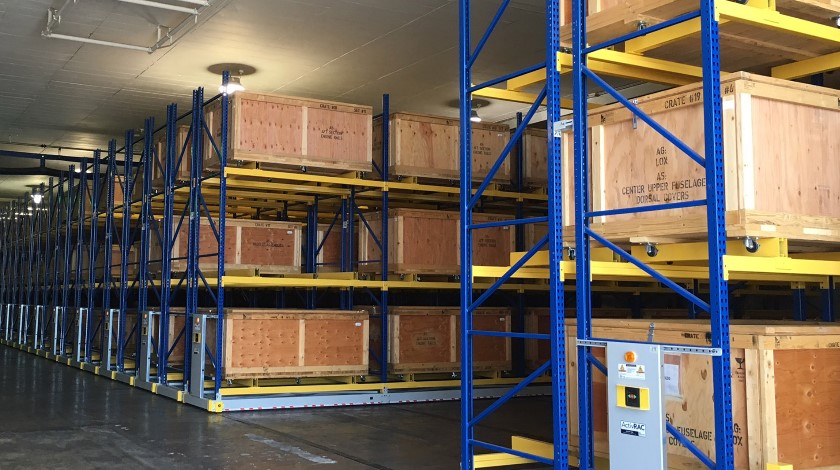Photo: spacesaver.com
Reading Time: < 1 minuteAviation companies are increasingly exploring automated systems in areas such as parts tracking in the warehouse, but are met with implementation challenges.
Satair, the wholly owned Airbus aftermarket logistics subsidiary, is started investing heavily in re-automation throughout its network with new systems introduced at its Ashburn facility last year.
Development of systems are ongoing in Copenhagen while it is seeking out an automation system for its Hamburg site. Paul Kilmister, global head of warehouse and transportation at Satair Group, says almost all of its facilities feature a level of automation and varying levels of connectivity to its ERP system.
However, Klimster concedes that one of the primary challenges of automation systems is that the market has evolved towards the business to consumer and e-commerce applications. Andy Smith, group operations director at AJW, says the company is always looking at ways to introduce more automation into its operation and has explored mechanical carousels and shelf voice control solutions.
At present, he says that due to the complexity and range of tasks that need to be completed, the component specialist currently runs a manually intensive system at its main warehouse. “Any implementation of an automated system needs to be balanced with any time saving in the process and the return on investment,” Smith explains.
“The challenge with any automated system for us is that it must be able to manage a range of tasks, from stock picking to stock counting and reliability over our standard working shifts of 24 hours a day, 365 days a year is essential.”

